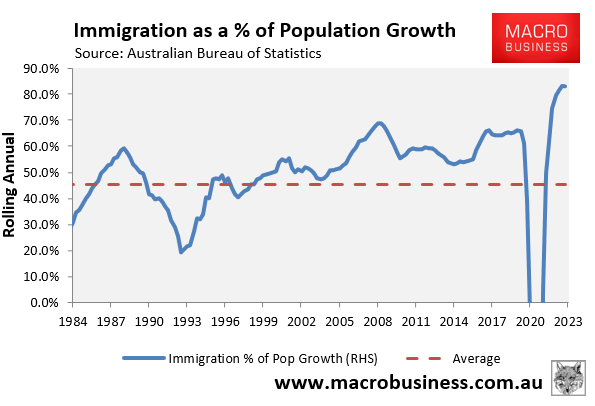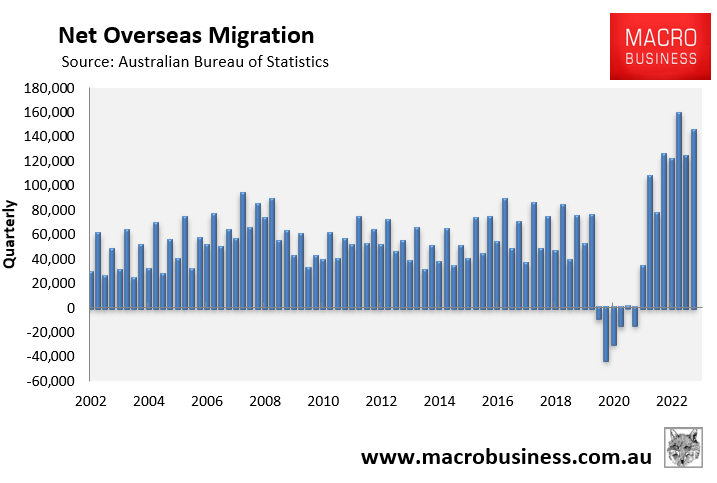Sharri Markson of Sky News interviewed me Thursday night about the latest population statistics from the Australian Bureau of Statistics, which broke records in all major jurisdictions.
Below are highlights from the interview.
Sharri Markson:
New figures show that immigration numbers for the year to September have soared to nearly 550,000 people, more than twice the population of Hobart here in just one year.
Leith, this is your biggest concern. What do you think about it?
Leith van Onselen:
This is the reason why Australia has a rental crisis.

Australia’s population grew by 660,000 people in the year to September, and 83% of that was from net overseas migration, which went up by 550,000, as you just said, in the September quarter.

We had 145,000 net overseas migrants in the September quarter, which was the second highest quarterly number in Australia’s history.

And Australia’s population growth rate of 2.5% was actually the highest since 1952. So, these numbers are off the charts.

We have record immigration in every single major state across Australia.

Chart by Alex Joiner (IFM Investors)
At the same time, Australia only added 156,000 homes in the year to September, which means we added one home per 4.2 residents.
So, this is why the rental vacancy rate is at a record low, why rents have skyrocketed, and why Australians have been forced into homelessness or into group housing.
The blame rests squarely with the Albanese government, which has thrown open the immigration floodgates without a plan to house these people or to provide infrastructure.
It is as simple as that.

